
Putnam County is a county located in the U.S. state of Ohio. As of the 2010 census, the population was 34,499. Its county seat is Ottawa. The county was created in 1820 and later organized in 1834. Its name is in honor of Israel Putnam, who was a hero in the French and Indian War and a general in the American Revolutionary War.

Leipsic is a village in Putnam County, Ohio, United States. The population was 2,093 at the 2010 census.

The Reitz Home Museum is a Victorian house museum located in the Riverside Historic District in downtown Evansville, Indiana. The museum offers year-round guided tours.

The Alms and Doepke Dry Goods Company is a historic commercial building in Cincinnati, Ohio, United States. Located along Central Parkway on the edge of downtown, it is a late Victorian structure designed by Samuel Hannaford, a renowned Cincinnati architect.

The William Edwards Farmhouse is a historic residence near Cincinnati in the village of Newtown, Ohio, United States. One of the area's leading early farmhouses, it has been designated a historic site.

The Louis Sawyer House is a historic residence in the city of Wyoming, Ohio, United States. Erected at the turn of the twentieth century, it was originally the home of an important lawyer, and it has been designated a historic site because of its architecture.
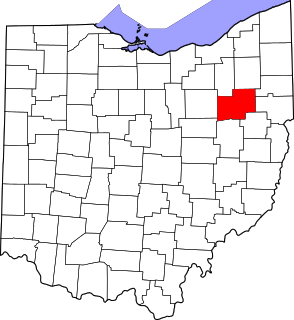
This is a list of the National Register of Historic Places listings in Stark County, Ohio.
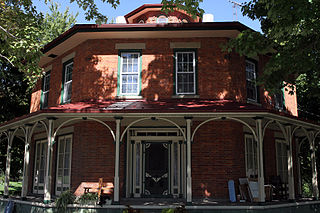
The John Hosford House is a historic octagon house located along U.S. Route 20 in Monroeville, Ohio, United States. Built at an unknown point in the mid-nineteenth century, it has been named a historic site.

The Mallory–Neely House is a historic residence on 652 Adams Avenue in Memphis, Tennessee, USA. It is located in the Victorian Village district of Memphis. It has been identified as one of numerous contributing properties in the historic district.
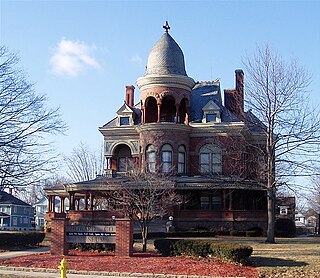
The Seiberling Mansion is a historic house located at Kokomo, Indiana, United States. In 1887, Monroe Seiberling of Akron, Ohio, traveled to Kokomo to open the Kokomo Strawboard Company, which would make shoeboxes out of straw and employ seventy-five people. Within six months, Seiberling, uncle of Goodyear Tire and Rubber Company founder Frank Seiberling, sold the Kokomo Strawboard Company and opened the Diamond Plate Glass Company. He began construction on his mansion in October 1889 at a cost of $50,000, with construction ending within two years. The mansion is built in a mixture of Neo-Jacobean and Romanesque Revival styles.
Ehrick Kensett Rossiter was an American architect known for the country homes he designed.

The Donovan Robeson House is a historic house in Greenville, Ohio, United States. Located along Fourth Street west of downtown, the Robeson House has been ranked as the city's most significant Queen Anne mansion.

The Leipsic Village Hall was a historic village and township hall in the village of Leipsic in the northwestern part of the U.S. state of Ohio. Built in 1904, the village hall was a large three-story brick building with a corner tower. For a community as small as Leipsic, it was a very elaborate building: the tower was crowned with battlements, and corbelling was used to support a significant portion of the roofline. At one time, the building served a wide range of municipal purposes: besides meeting rooms for elected village and township leaders, it contained space for a jail, the fire station, a community center, municipal offices, a library, and the mayor's courtroom.
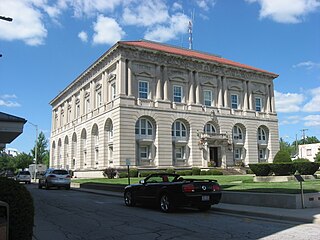
The Putnam County Courthouse is a historic governmental building in downtown Ottawa, Ohio, United States. A two-story building, located at 245 E. Main Street, it was built in 1912 in the Beaux-Arts style of architecture.

Albert John Gibson was an architect in Missoula, Montana who designed a number of buildings that are listed on the National Register of Historic Places.

The Morgan Mansion is a historic residence in and the current city hall of Wellston, Ohio, United States. Built in 1905, it was the home of one of Jackson County's leading industrialists, T.J. Morgan, and it has been designated a historic site.

Warder Public Library is a historically significant building in Springfield, Ohio, United States. A robust example of Richardsonian Romanesque architecture, it was a gift to the city from industrialist Benjamin H. Warder, and served as the main branch of the Clark County Public Library from 1890 to 1989. It now houses the Clark County (Warder) Literacy Center.
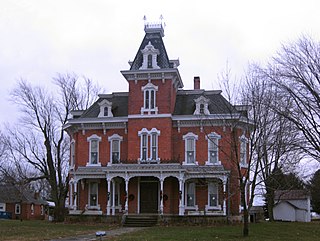
The John Wright Mansion is a historic farmhouse located east of Bellevue in northwestern Huron County, Ohio, United States. Built in 1881, it represents an unusual combination of location and architectural styles.

The Middleport Public Library is a historic Carnegie library in the Ohio River village of Middleport, Ohio, United States. Built in the early twentieth century, it has been named a historic site.
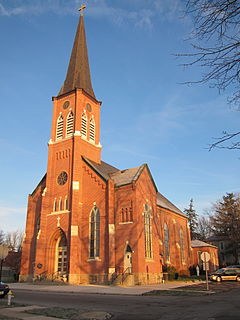
The North Main–North Detroit Street Historic District is a historic neighborhood on the northern side of the city of Kenton, Ohio, United States. Important because of its architecture and because of its prominent early residents, it was declared a historic district in 1985.






















